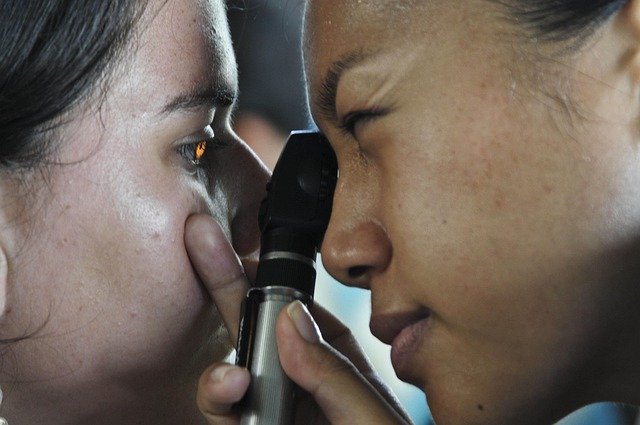Using symptom diaries and home tests to track fluctuating sight
A practical overview of how keeping symptom diaries and using simple home tests can clarify patterns in intermittent blurred vision. This short guide explains common monitoring approaches, when to seek professional diagnostics, and how ergonomics and medication changes may affect daily sight.

Using symptom diaries and home tests to track fluctuating sight
Fluctuating vision can be confusing: one hour you read comfortably, the next the print blurs or light produces glare. Systematically recording what you notice — times, activities, lighting, and any related symptoms — helps distinguish transient issues from patterns that need clinical diagnostics, such as refraction or imaging. This article outlines structured approaches to symptom diaries, practical home tests, and how those records can support discussions about screening, telemedicine visits, and referrals to neurology or pediatrics when appropriate.
This article is for informational purposes only and should not be considered medical advice. Please consult a qualified healthcare professional for personalized guidance and treatment.
How can symptom diaries help with monitoring symptoms?
A symptom diary is a simple log where you note episodes of blurred vision, duration, associated activities (reading, screen use, driving), lighting conditions, and any other signs like headaches or dizziness. Tracking frequency and context helps clinicians determine whether fluctuations relate to refractive variability, intermittent ocular surface disease, medication side effects, or systemic issues. Over two to four weeks, patterns often emerge — for example, worsening at the end of a workday suggests ergonomics or screen-related strain, whereas episodic sudden blurring might prompt faster referral for imaging or neurology assessment.
When should refraction and optics testing be sought?
If a diary shows vision changes linked to near work, lighting, or specific tasks, a formal refraction and optics evaluation can detect unstable prescriptions, accommodative problems, or binocular vision disorders. Refraction measures the eye’s focusing error; small changes in refractive state can cause intermittent blur, especially under fatigue. An optometrist or ophthalmologist can perform objective and subjective refraction, assess ocular alignment, and recommend lens options or workplace adjustments. Bring a copy of your symptom diary to help focus the exam on the most relevant times and visual tasks.
What role do imaging and neurology play in fluctuating sight?
When diaries note transient vision loss, double vision, visual field changes, or neurological symptoms like numbness and imbalance, clinicians may order imaging (such as MRI or CT) to evaluate the optic pathways and brain. Neurology input is important if vision changes are accompanied by headaches, focal neurological deficits, or episodic symptoms suggesting vascular or demyelinating causes. Home monitoring can help document timing and triggers for these events, improving triage and guiding the urgency of imaging and specialist referral.
How can telemedicine support screening and diagnostics?
Telemedicine enables remote review of symptom diaries and guided home testing, such as visual acuity charts, Amsler grid checks for central distortion, or simple color and contrast tasks. Video visits let clinicians observe pupil reactions, eye movements, and discuss recent medication changes that might affect vision. While telemedicine cannot replace in-person refraction or high-resolution imaging, it provides an efficient screening step and helps prioritize who needs quicker in-person diagnostics or specialist referrals in your area.
How do ergonomics and glare influence monitoring and care?
Environmental factors are common contributors to fluctuating sight. Poor ergonomics — screen height, distance, and text size — can increase accommodative strain and intermittent blur. Glare from windows or lighting can reduce contrast and worsen perceived blurriness. Include notes in your diary about workspace layout, screen breaks, and lighting tests (e.g., with and without blinds). Simple adjustments often improve symptoms and can be tried before or alongside formal vision assessments, but persistent problems should still prompt diagnostic evaluation.
When are medication changes and rehabilitation considered?
Some medications cause blurred vision or visual disturbances; include any recent medication starts, stops, or dose changes in your diary. If an ocular diagnosis is established, management may include topical treatments, optical correction, or vision rehabilitation strategies for persistent deficits. Rehabilitation can involve orthoptic exercises for binocular issues, low-vision strategies, or referral to pediatric specialists if fluctuations occur in children. Documentation from home monitoring helps clinicians decide between adjusting medication, prescribing optics, or initiating formal rehabilitation.
Understanding the limits of home tests is important: they support screening and monitoring but do not replace objective clinical diagnostics like refraction, imaging, or comprehensive ocular exams. Keep concise, dated entries and note any triggers or relieving factors to make records most useful for clinicians. When telemedicine is used, share clear photos or scans of diary pages and any home-test results to aid remote evaluation.
In summary, combining structured symptom diaries with targeted home tests provides a practical framework for identifying patterns in fluctuating vision. These records enhance communication with eye care professionals, guide the need for refraction, imaging, or neurology referral, and support decisions about ergonomics, medication changes, and rehabilitation. Consistent monitoring over weeks often clarifies whether intermittent blur reflects environmental strain, refractive variability, or a condition requiring further diagnostic workup.






